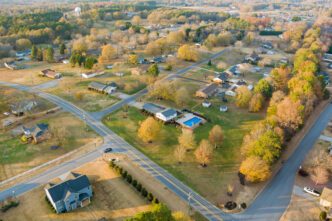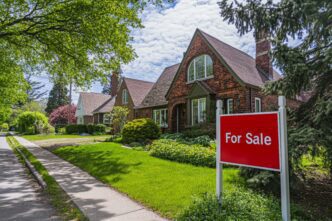Executive Summary
- A 50-year mortgage proposal, supported by President Trump, is being developed by the FHFA to lower monthly housing payments amid an affordability crisis.
- Analysis indicates the longer loan term would offer modest monthly savings but could more than double the total interest paid compared to a 30-year loan.
- Critics warn that 50-year mortgages would significantly slow the process of building home equity, increasing financial risk for homeowners.
- The proposal comes as the national median home price has risen to more than five times the median income, making homeownership increasingly difficult.
A proposal championed by President Donald Trump to introduce 50-year mortgages is being explored by the Federal Housing Finance Agency (FHFA) as a potential solution to the nation’s housing affordability crisis. The plan, confirmed by FHFA Director Bill Pulte, aims to lower monthly payments for homebuyers but has drawn scrutiny from analysts over concerns about significantly higher long-term interest costs and slower wealth creation.
The Housing Affordability Challenge
The proposal addresses a severe housing shortage and escalating costs in the United States. According to market data, the median home price in 2023 was 5.3 times the median income, a significant jump from a ratio of 3.6 in 1985. In some metropolitan areas, this price-to-income ratio now exceeds 10. A 2025 Bankrate study noted that an income of approximately $117,000 is needed to afford an average home, up from $78,000 in 2020, reflecting both rising prices and higher interest rates.
Financial Implications of a 50-Year Loan
The core concept of a 50-year mortgage is to reduce monthly payments by extending the loan term. However, experts estimate the interest rate for such a loan would be about 0.5 percentage points higher than a conventional 30-year mortgage. According to a HousingWire analysis, this would result in only modest savings on a monthly basis. For a typical $400,000 home, the monthly payment might decrease by only $135, from $2,481 to $2,346.
While the monthly payment is slightly lower, the total interest paid over the life of the loan would be substantially higher. The analysis found that a borrower would pay over $1 million in interest on a 50-year mortgage for a $400,000 home, compared to approximately $493,000 in interest for a 30-year term.
Slower Equity and Increased Risk
A primary concern raised by critics is the significantly slower rate at which homeowners would build equity. With most of the initial payments going toward interest, it could take far longer to build a meaningful ownership stake. For the same $400,000 home, it would take an estimated 24 years to pay off the first $50,000 of principal with a 50-year mortgage, compared to just nine years with a 30-year loan. This slow equity accumulation leaves homeowners more vulnerable to market downturns, increasing the risk of having an ‘underwater’ mortgage where the loan balance exceeds the home’s value.
Summary of Findings
In summary, while the 50-year mortgage proposal aims to address immediate affordability by lowering monthly payments, housing market experts raise significant concerns about its long-term financial implications for buyers, including substantially higher debt and delayed wealth creation. The policy is being advanced by FHFA Director Bill Pulte, who has also drawn attention for his public statements regarding other political and financial figures. It is important to note that any accusations referenced in reports are allegations, and individuals are presumed innocent until proven guilty in a court of law.








